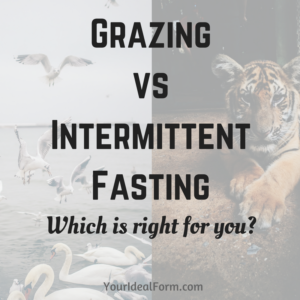
On top of all the information out there about what to eat or how much to eat, there’s also the debate of when to eat. There are basically two schools of thoughts on the matter, Intermittent Fasting, where you only eat during a certain window each day, and Grazing, where you eat every couple of hours. Let’s take a look at the two in more detail. Keep in mind that these systems are meant to be used in combination with another eating plan. If you’re counting calories, you eat the same number of calories per day whether you’re eating six times a day or just twice.
Grazing
With grazing, the idea is that you eat a little bit every couple of hours. This keeps you from ever getting hungry, and keeps your blood sugar levels at an even keel for the entire day. It is rather like a Hobbit’s eating plan; breakfast, second breakfast, elevenses, lunch, tea, supper, dinner… You have your breakfast, and then a mid-morning snack, then lunch, an afternoon snack, dinner, and then a little something before bed. The snacks are usually something like a piece of fruit or a small handful of nuts.
Intermittent Fasting
During intermittent fasting, you fast for a period and only eat during a specific window each day. Some people do a 12-12 split, meaning they fast 12 hours and take their meals during the other 12. Others fast for 16 hours and only eat during an 8-hour window. Ideally, 8 hours of the fasting period is taken up by sleep, so you only have to deal with being hungry for a shorter time. The idea here is that after 12 hours or so of fasting, the body is done with digesting your last meal, and starts burning fat for energy. Commonly, those who do intermittent fasting skip breakfast or just have a couple cups of black coffee as breakfast and just have a larger lunch and dinner. Having zero-calorie caffeinated drinks is “allowed” as the caffeine has the effect of suppressing hunger.
Which should you choose?
Neither of these is inherently better than the other. In the end, how much you eat, not when, determines your body size. Changing up when you eat is simply a tool that may help you be more successful in sticking with it. To recap: With grazing, you eat every couple of hours, so you never get hungry. However, if you are on an eating plan that restricts how much you can eat, your meals get much smaller, so you never really get “full” either. With intermittent fasting, you need to learn to deal with being hungry (and possibly hangry), which can be really difficult and distracting, but dividing your food for the day between only two meals means you can have bigger, more satisfying meals. If you wish to add either of these to your current eating plan, pick the one you think will work best for you. Try it for a week, and if it doesn’t work, you can always try the other.